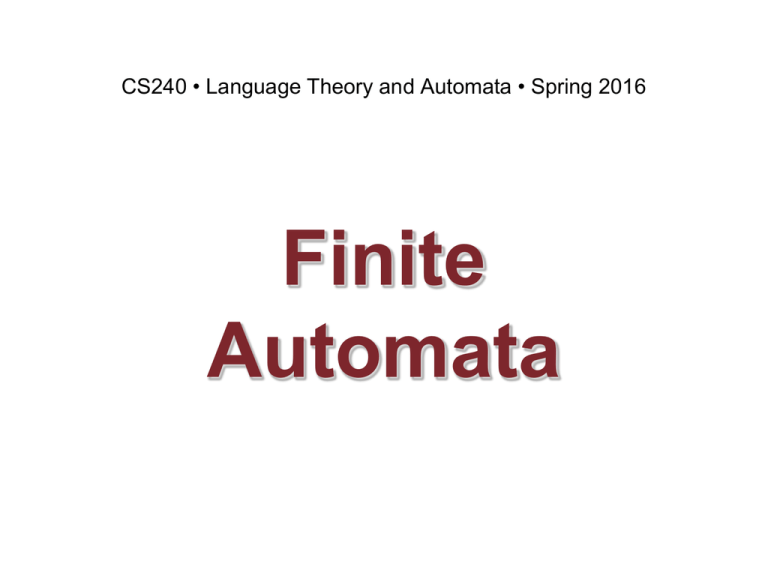

Tutors at the TutorsGlobe are committed to provide the best quality online tutoring assistance for Theory of Computation Homework help and assignment help services. Through Online Tutoring, you would be able to complete your homework or assignments at your home. You can join us to ask queries 24x7 with live, experienced and qualified online tutors specialized in Theory of Computation. We provide email based Theory of Computation help.

Here you can get homework help for Theory of Computation, project ideas and tutorials. Students are getting 100% satisfaction by online tutors across the globe.
X mod 3 = 5 finite state automata full#
Tutors, at the take pledge to provide full satisfaction and assurance in Theory of Computation help via online tutoring. Latest technology based Theory of Computation Online Tutoring Assistance Example: L0 =, where |x| is an integer represented by x. We can turn this fsm to an acceptor by designating certain state(s) as accepting, and therefore recognizing any language that is a union of residue classes mod 3. This validates the two transitions out of state ‘≡1’. Then L 0 symbolizes the integer |L 0| = 2 |L|, where |L 0| mod 3 = 2 and L 1 symbolizes |L 1| = 2 |L| + 1, where |L 1| mod 3 = 0. Suppose L has been read, most noteworthy bit first, and, by way of illustration, the fsm is now in state ‘≡1’, signifying that |L| mod 3 = 1. Let |L| represent the integer symbolized by L, and likewise for |L b|. Mod 3 divider: Read a binary integer ‘left to right’, that is most significant bit first, and calculate its remainder mod 3.Įxplanation: Let consider an integer with the binary representation L b, where L is the bit string and b is a single bit.

Shift register: It save the last 3 bits of the data stream:Ĭounter mod m with reset (example: clock):įSMs are the standard system components for executing arithmetic numbers of fixed size, state 32 bits however they can’t do much more than addition and subtraction on numbers of random size.Įxercise: Illustrate that there is no fsm multiplier for the numbers of random size. Simple finite state machines encountered in the light switches, ticket vending machines, wrist watches, computer user interfaces and so on. So by simply removing (or not drawing) the transitions leaving the state "k=3" we will stay in the state "k=3" forever when we have seen a number that is congruent 3 modulo 5.Simple Finite State Machines, Finite State Machines when such a number has been seen we are in state "k=3". The machine should be in a final state whenever the number read so far is congruent to 3 (mod 5). For example we could calculate the next state after state "k=1" if d=2: (3*1+2) mod 5 = 0 so we have a transition from the state "k=1" to the state "k=0" if d=2. , "k=4".įor each of the 5 states and the 3 possible inputs (0, 1, 2) we can calculate the next state. This means that we can use a state machine having 5 states named: "k=0", "k=1". The variable k can only have 5 different values: 0, 1, 2, 3 and 4. We see that i is no longer needed to calculate k so if we are only interested in k we can remove i: k = 0 So the content of our program now looks like this: k = (3*(i mod 5) + d) mod 5Īnd because k is nothing but i mod 5 we can replace i mod 5 by k: i = 0 Specifically, if you look at any state $s$ and any action $\text=\\ For efficiency, the state machine must be deterministic. The machine should be in a final state whenever the number read so far is congruent to $3 \pmod 5$. That is, if you’ve seen number $x$ and read a new digit $d$, your new number is $3x + d$.

It should read the digits in left-to-right order. Professor Martinez needs a state machine that will recognize certain base-$3$ numbers.


 0 kommentar(er)
0 kommentar(er)
